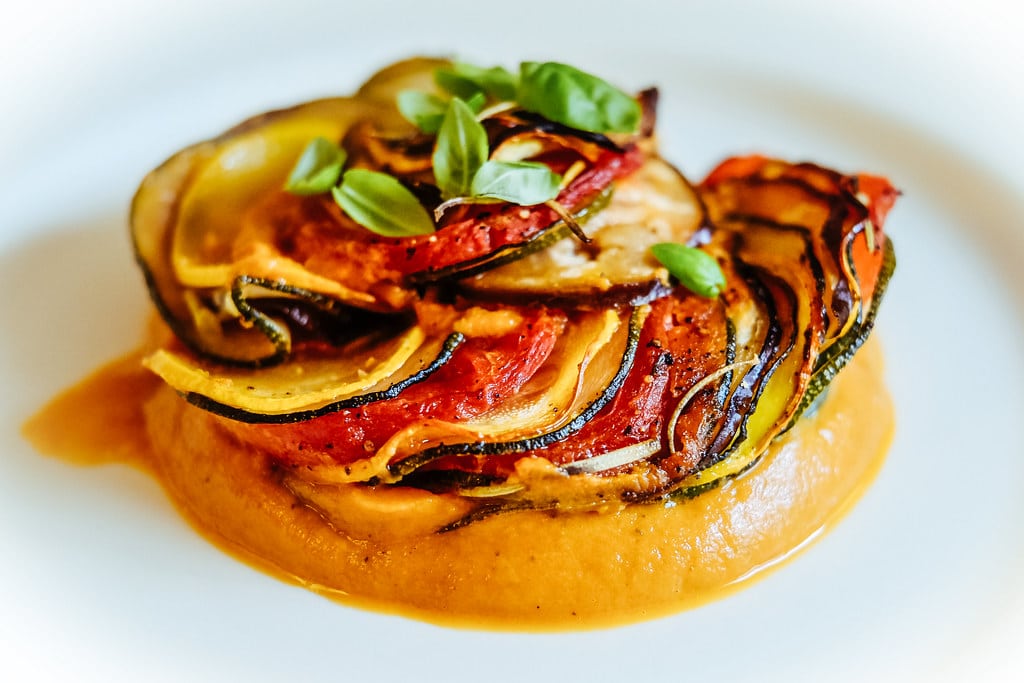Ratatouille, a dish as humble in its ingredients as it is rich in its history, stands as a testament to the rustic elegance of Provencal cuisine. This vegetable medley, celebrated for its vibrant colours and deep flavours, has woven its way through the fabric of French culinary tradition, becoming a symbol of comfort and simplicity.
The origins of ratatouille trace back to the picturesque region of Provence, France, where the abundance of fresh produce inspired local cooks to create what is now known as ratatouille. This dish, rooted in the 18th century, was initially a peasant food, made from the vegetables that farmers had on hand. The word ratatouille itself derives from the Occitan language, combining ratatolha and the French verb touiller, meaning to stir or to toss, reflecting the dish’s simple preparation.
Traditional ratatouille pays homage to its origins with a careful selection of ingredients: tomatoes, zucchini, eggplant, bell peppers, onions and a mix of herbs de Provence. Each vegetable is sautéed separately to maintain its individual texture and flavour, then combined and simmered to meld the flavours together.
The evolution of ratatouille is as rich and varied as the regions of France itself. Each household and chef brings their interpretation to the dish, some preferring a layered presentation, others a more rustic, mixed approach. This versatility has allowed ratatouille to transcend its origins, finding a place in both home kitchens and high-end restaurants worldwide.
As French cuisine gained prominence, ratatouille travelled beyond the borders of Provence, inspiring chefs and home cooks alike. Its simplicity and adaptability made it a canvas for culinary creativity, allowing for variations that include different herbs, spices, and even meats, though purists might argue these stray from the essence of the traditional dish.
The international acclaim of ratatouille was further cemented by its portrayal in popular culture, most notably in the animated film Ratatouille. This depiction introduced the dish to a global audience, capturing its spirit and the timeless appeal of French cuisine. The film’s message, that anyone can cook, echoes the inclusive nature of ratatouille.
Today, ratatouille is celebrated not only for its taste but also for its representation of the Mediterranean diet, known for its health benefits. It embodies the simplicity and wholesomeness of Provencal cuisine, a reminder of the joys of seasonal cooking and the beauty of bringing simple ingredients together in perfect harmony.







Click here to change your cookie preferences